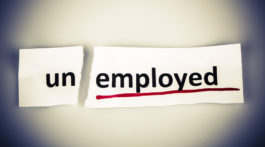by Michael Hicks
This year marks the 40th anniversary of peak factory jobs in the United States. These jobs have been in nearly steady decline ever since. Something close to this trend has occurred throughout the developed world for a half century. At the same time, manufacturing production hit a new record in 2015. This is true no matter how you measure it; the inflation-adjusted value of goods produced, the quantity-adjusted chain indices or value-added measures. Now, admittedly the data isn’t in yet, but it is likely 2016 will have displaced 2015 as the record year. Again, this trend is playing out across the developed world. So what is happening?
The most common story is that foreign competition has clobbered manufacturing. To be sure, we run a large trade deficit in goods, so Americans are consuming lots of things made elsewhere. So, it is surely possible that foreign trade led to some job losses. Estimates of factory job losses due to trade range between 750,000 and 1.4 million fewer American manufacturing jobs because of a trade deficit. Still, the US has lost some 7.5 million manufacturing jobs since the peak, so trade job loses run in the span of 10 percent to 20 percent of factory jobs. Moreover, European countries, nearly all of which run large trade surpluses, have lost manufacturing jobs at rates nearly identical to the United States.
In fact, there is some evidence that China is developing a rust belt and is shedding factory jobs, despite a breathtaking trade surplus. Most tellingly, it appears that worldwide manufacturing employment is shrinking, despite a nearly perfect balance of trade with other planets. Something else must be happening.
As should be obvious manufacturing productivity has enjoyed a very long period of rapid growth. The average US autoworker made 13 cars per year in 1999 and nearly 19 per year by 2011. Steel production in the US is roughly at the levels it was in the Reagan years, but requires only a quarter of the workforce. The truth is that factories are gaining in efficiency at a faster rate than demand for goods is growing. That is where the jobs went, and they ain’t coming back. Indeed, artificial intelligence means larger job losses loom in the near future.
Now, it is useful to acknowledge that foreign competition might have accelerated automation on the factory floor. Still, it is as likely that the unbridled tax abatements for business capital played an equally large role in the early loss of manufacturing jobs, but I will save that for another column.
It is equally important to admit that productivity growth probably made many of our exports more competitive. In addition, the US enjoys comparative advantage in high quality goods made by a sophisticated and well-trained labor force. Much of what we import today might be dropped from store shelves if it had to be made by more expensive American workers.
Anticipating the flood of hate mail I will receive by reciting these facts, I want to say that this is not a new indictment of President Trump (or Senator Sanders). Unlike many, I am not so naïve as to suppose that political rhetoric is policy. Nor do I think there is anything amiss about renegotiating trade deals. After all, the point of all trade deals is to increase trade.
The mistake comes in believing that changes to trade policy—no matter how favorable they may be to the US—will have a meaningful effect on manufacturing employment. Indeed, polite restrictions on civil discourse prohibit the most accurate modifiers to ‘stupid’ as it applies to folks who suppose otherwise.
In the end, manufacturing employment, like farm employment before it, has suffered only from the effects of economic and technological growth. We should be glad for it, and not pine away for a past that our grandfathers worked hard to liberate us from.
Michael J. Hicks, PhD, is the director of the Center for Business and Economic Research and the George and Frances Ball distinguished professor of economics in the Miller College of Business at Ball State University. Hicks earned doctoral and master’s degrees in economics from the University of Tennessee and a bachelor’s degree in economics from Virginia Military Institute. He has authored two books and more than 60 scholarly works focusing on state and local public policy, including tax and expenditure policy and the impact of Wal-Mart on local economies.














